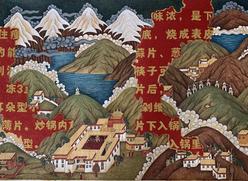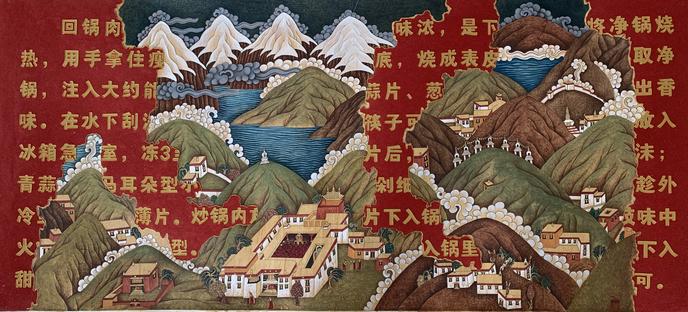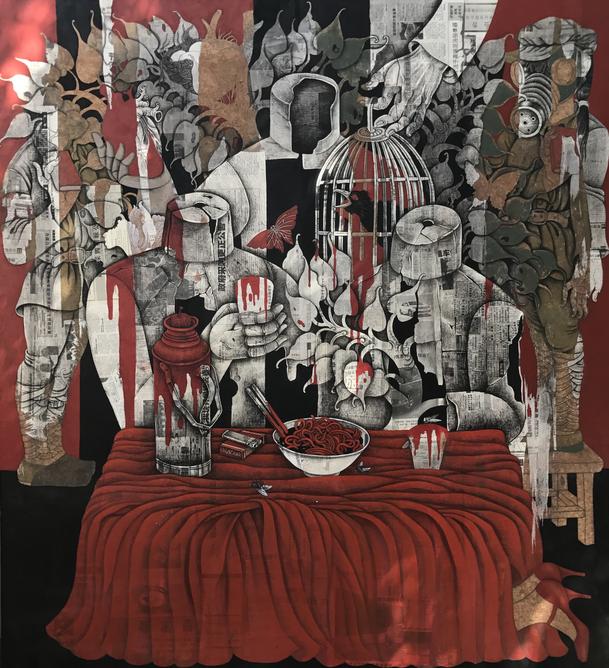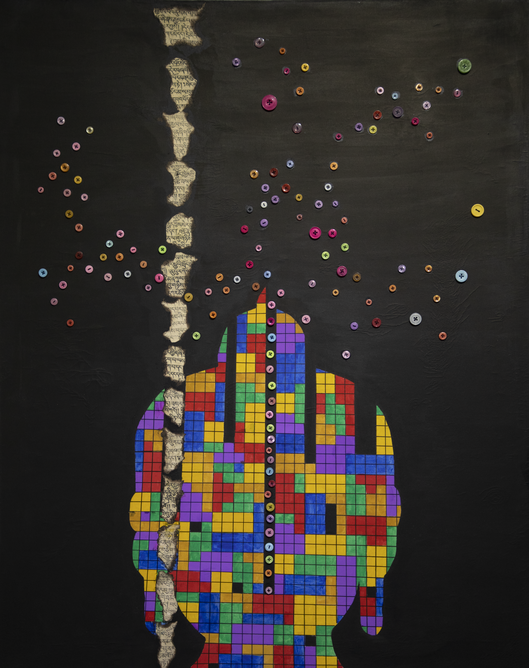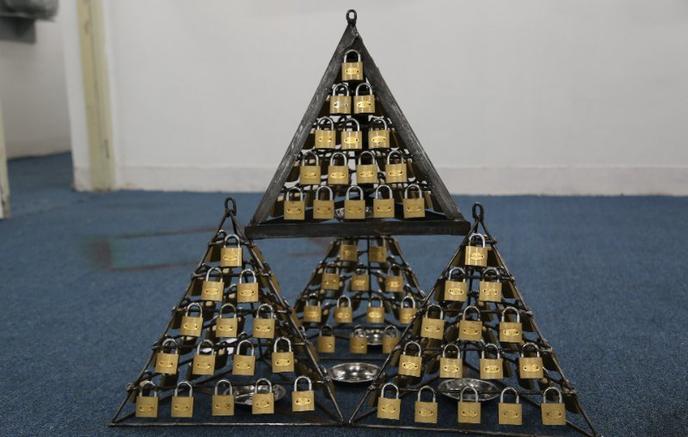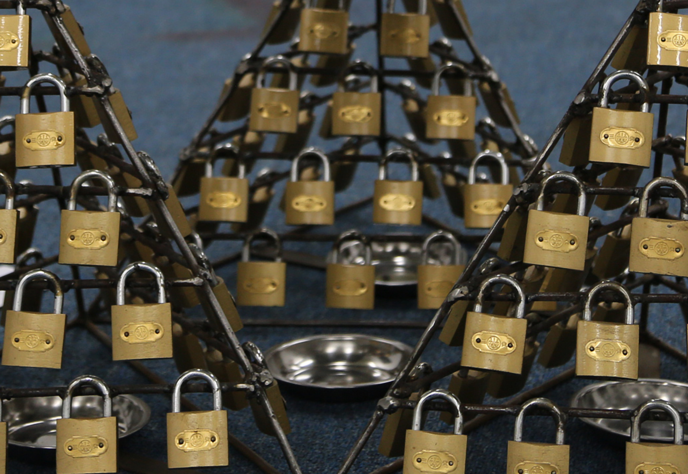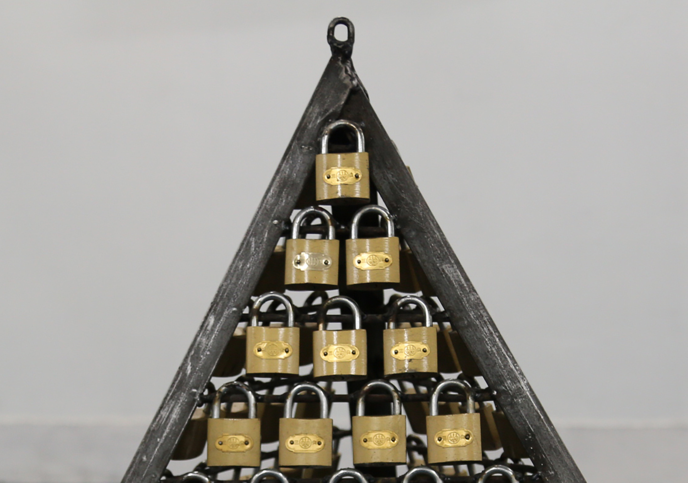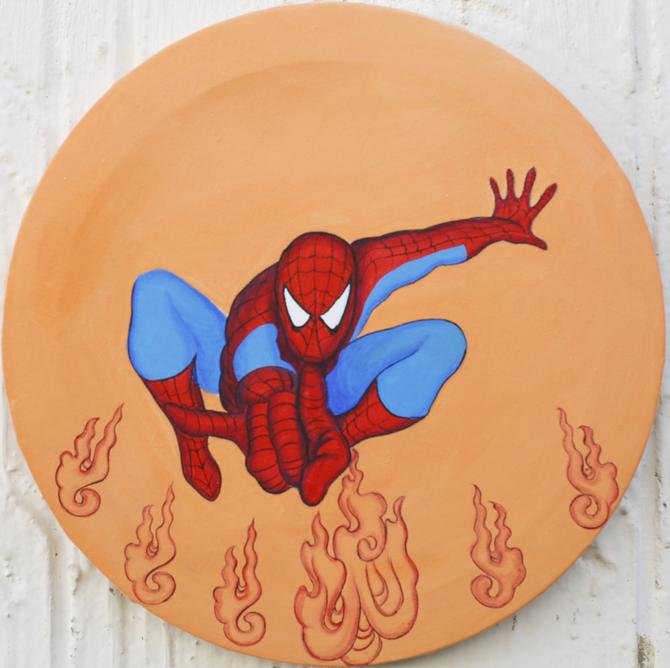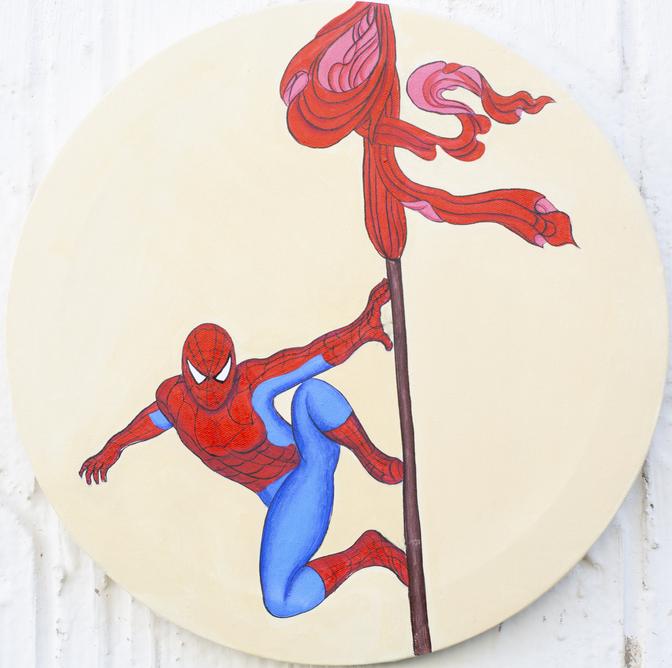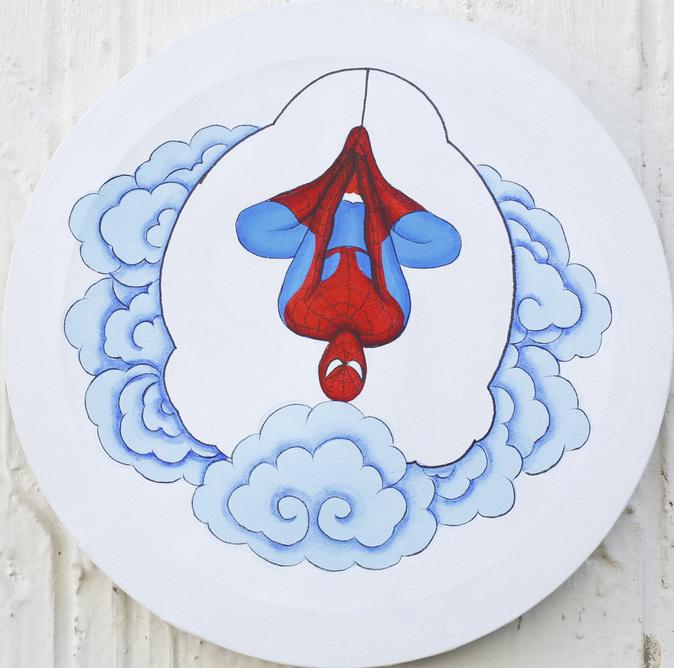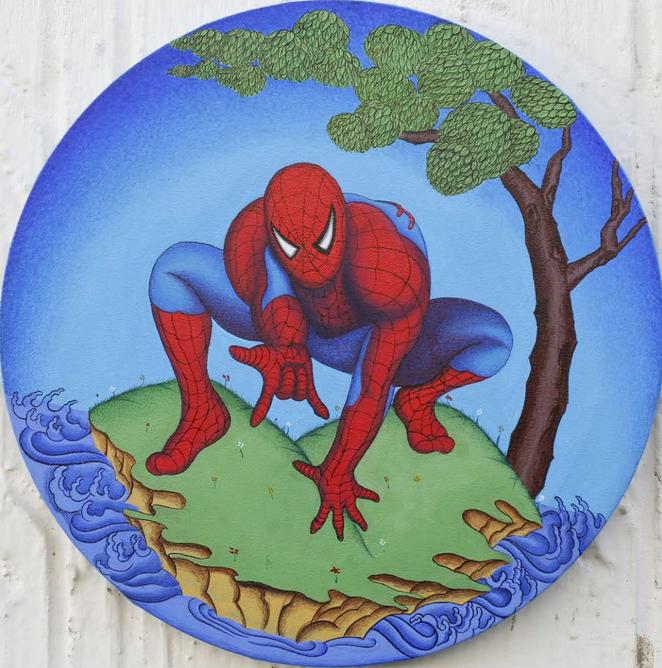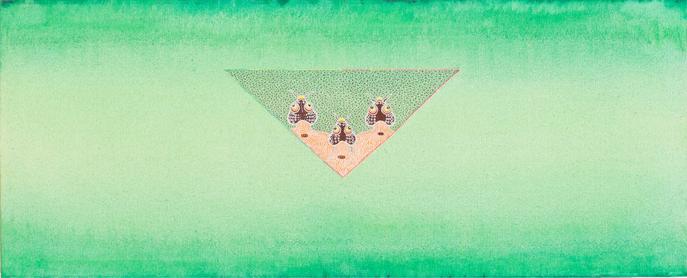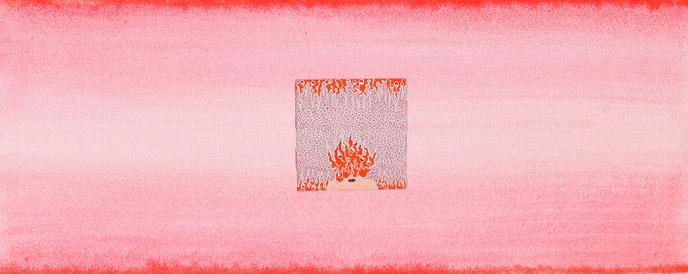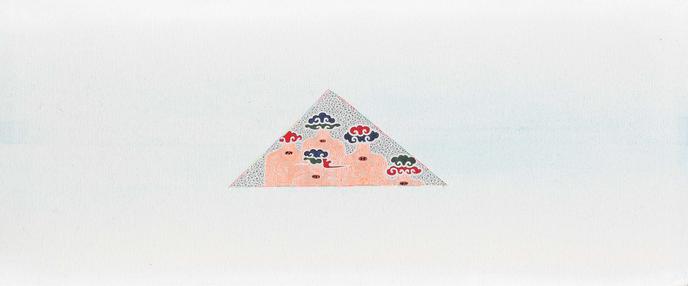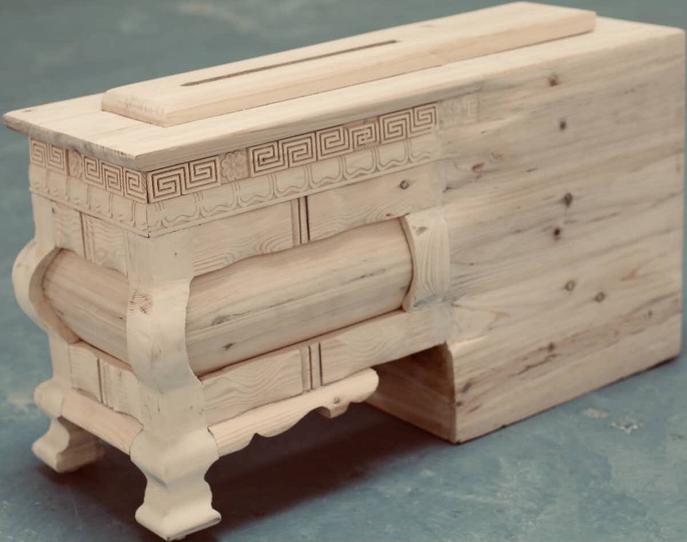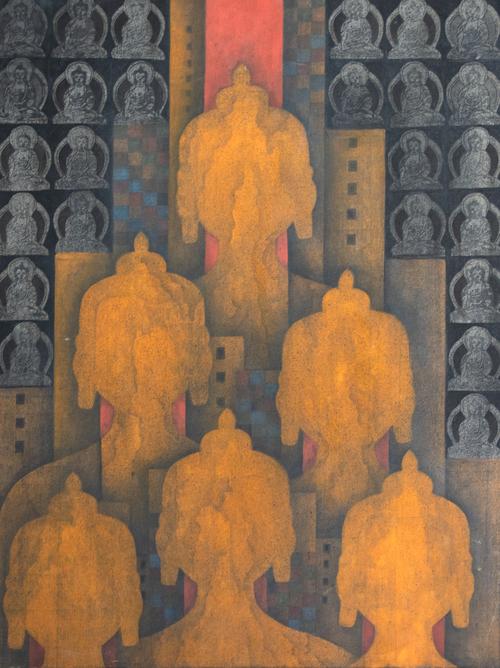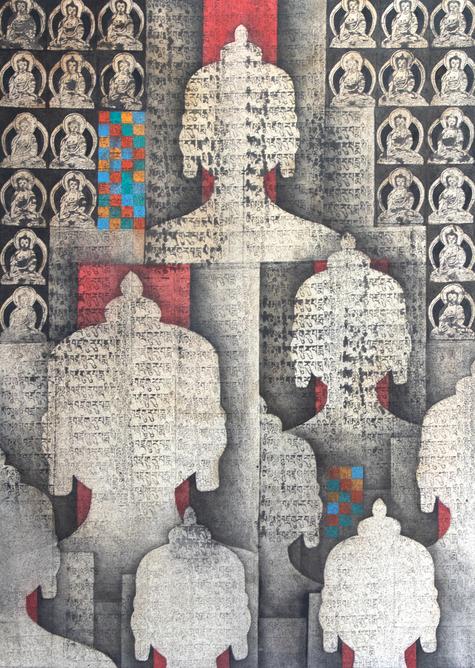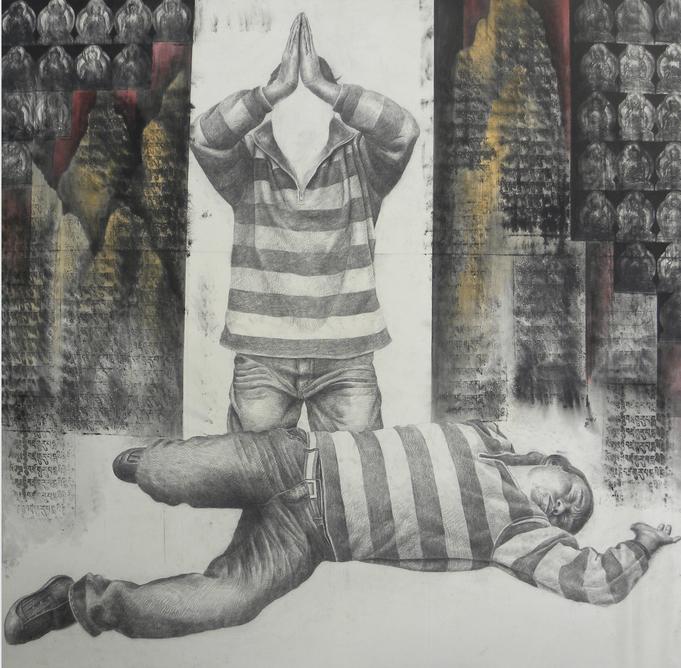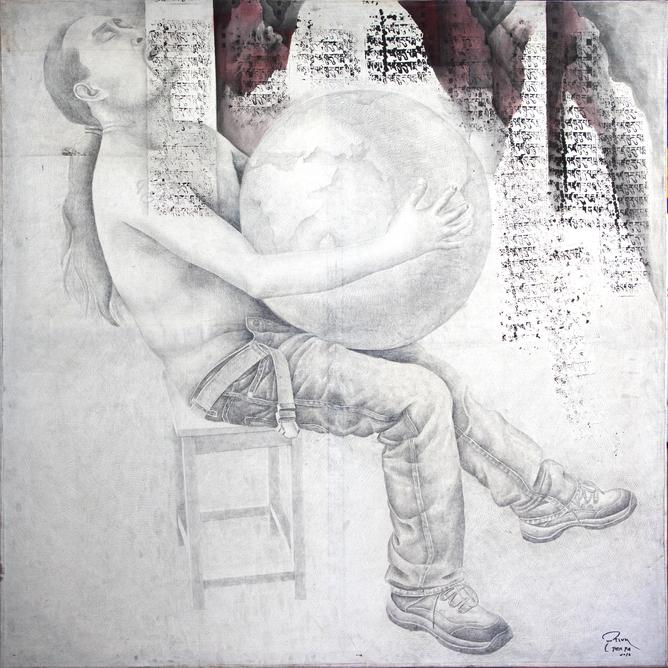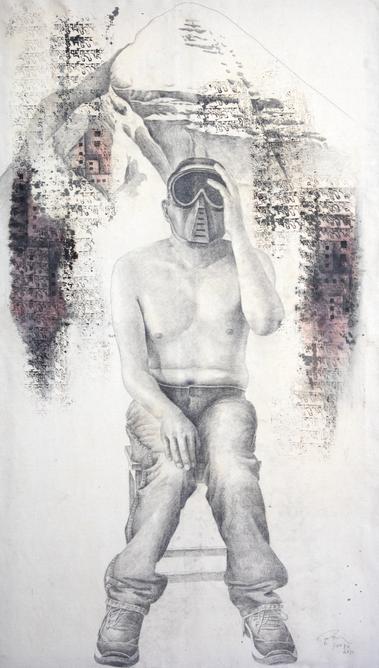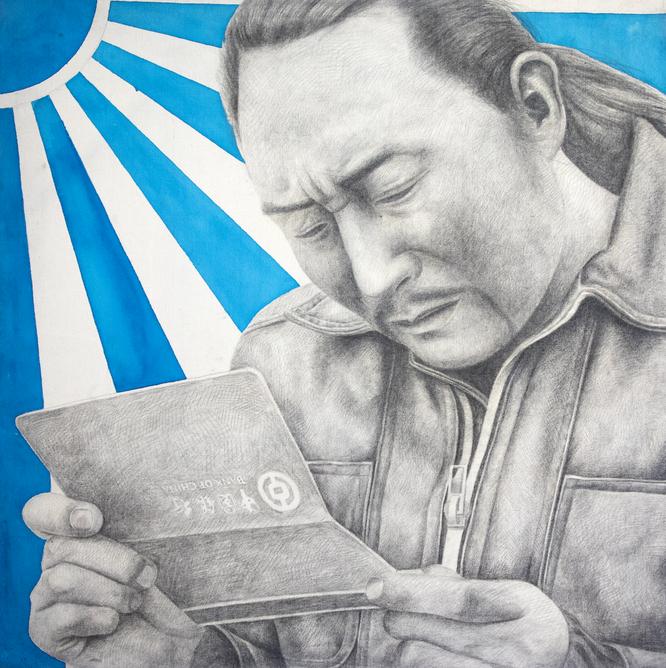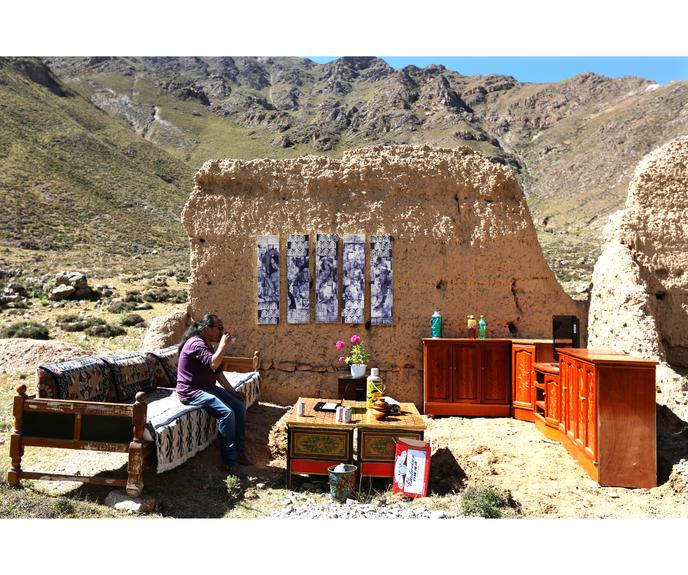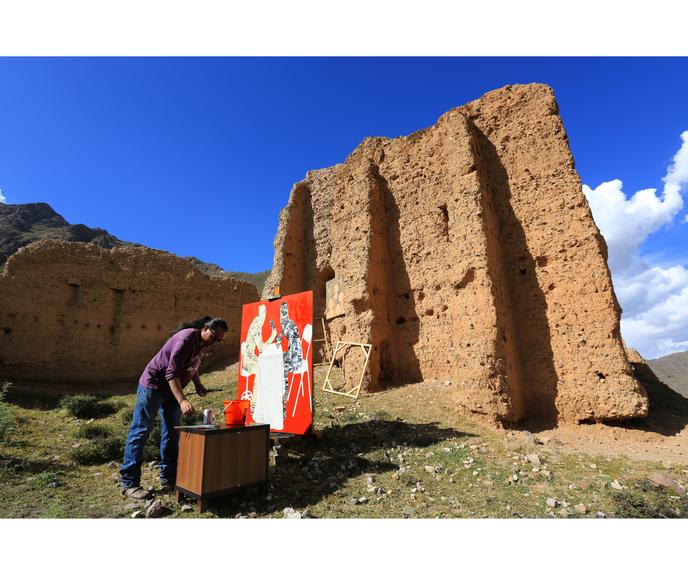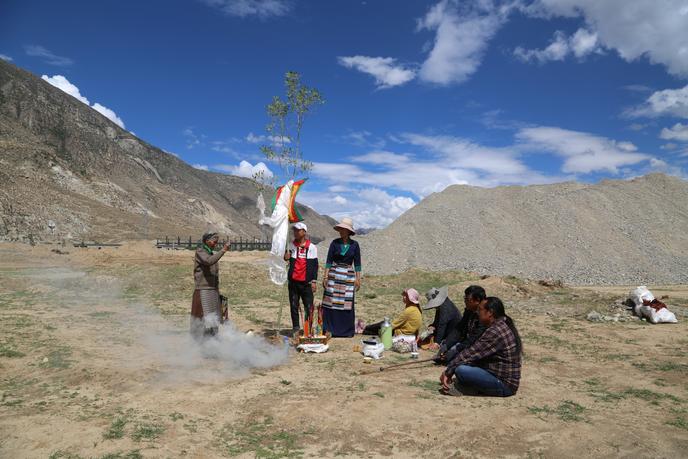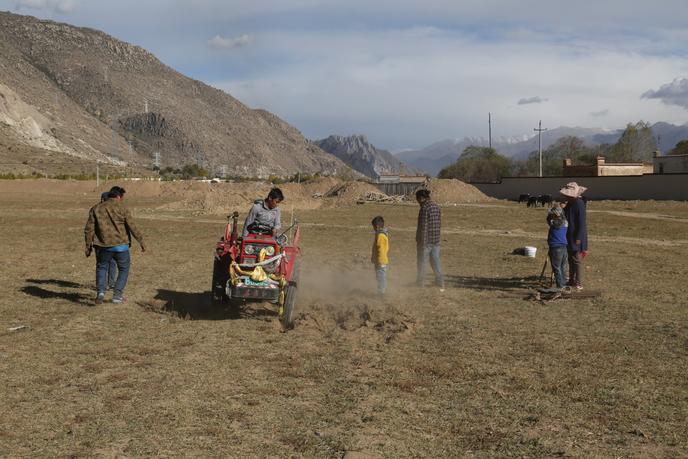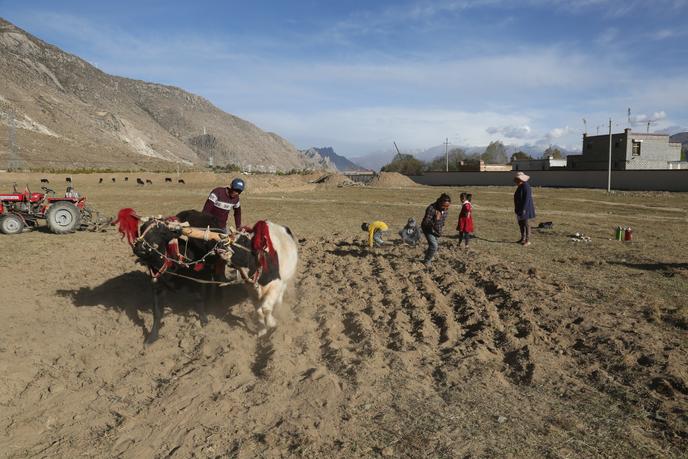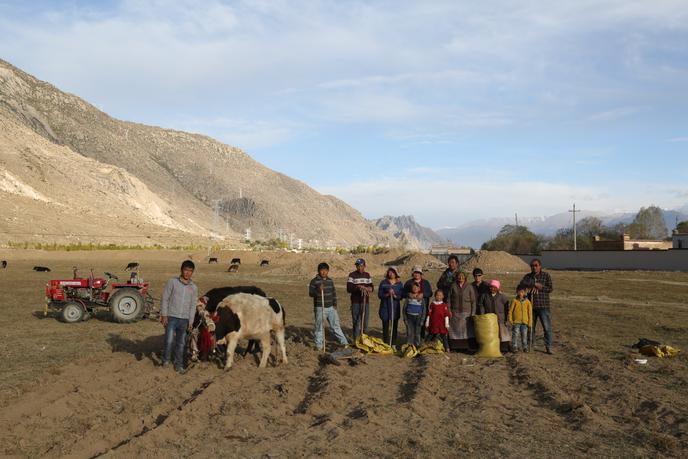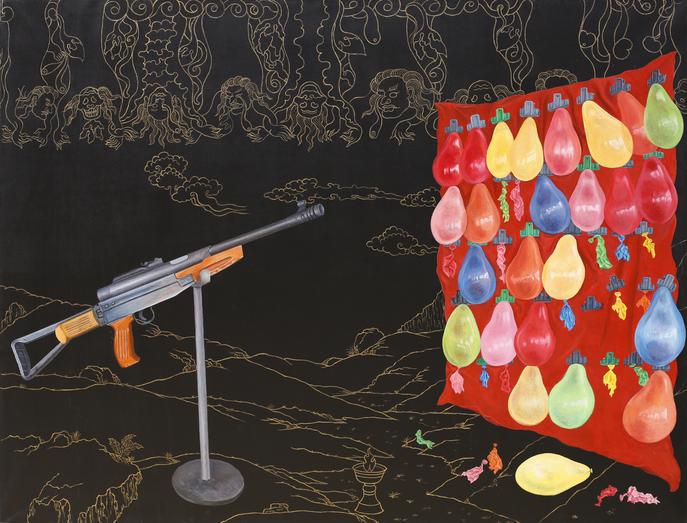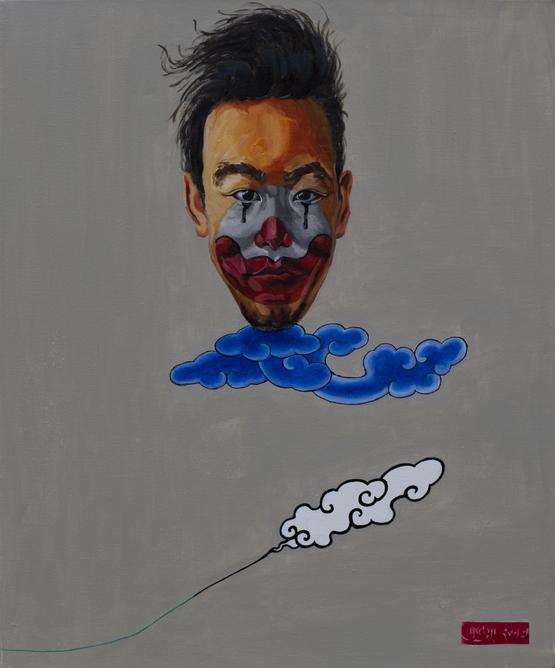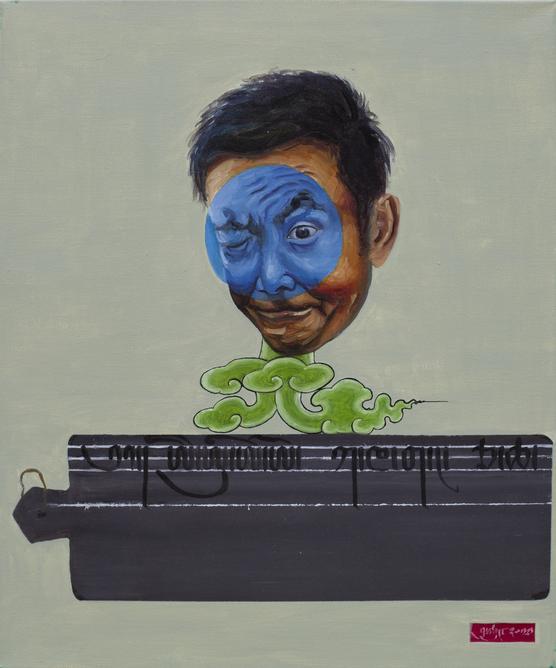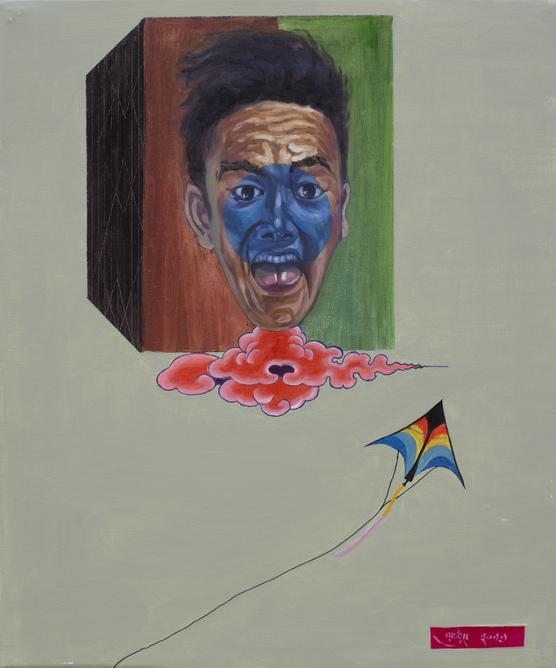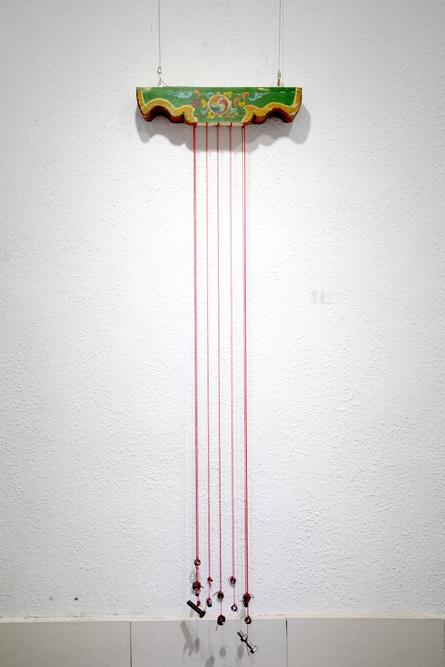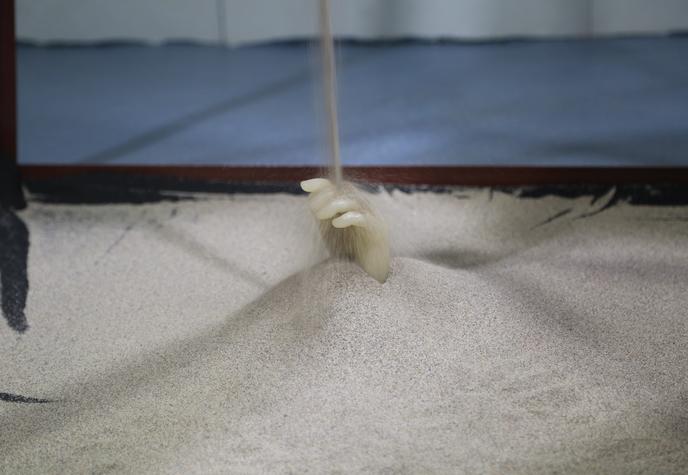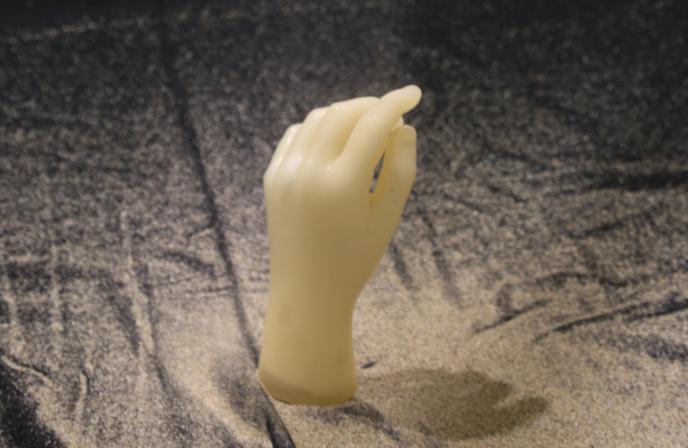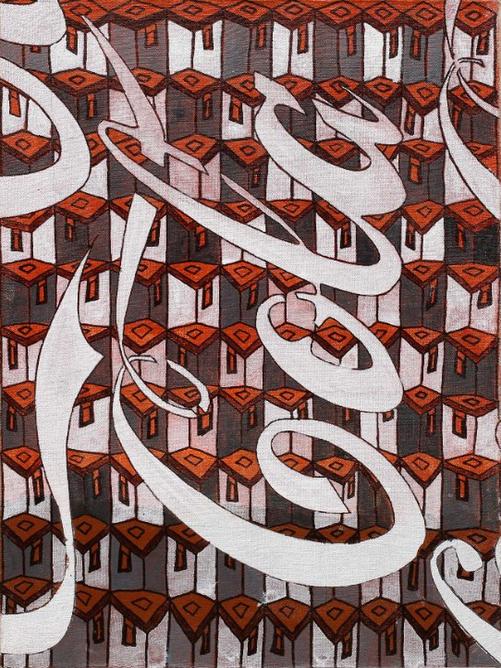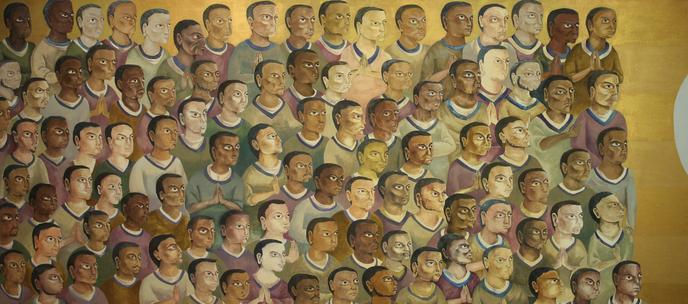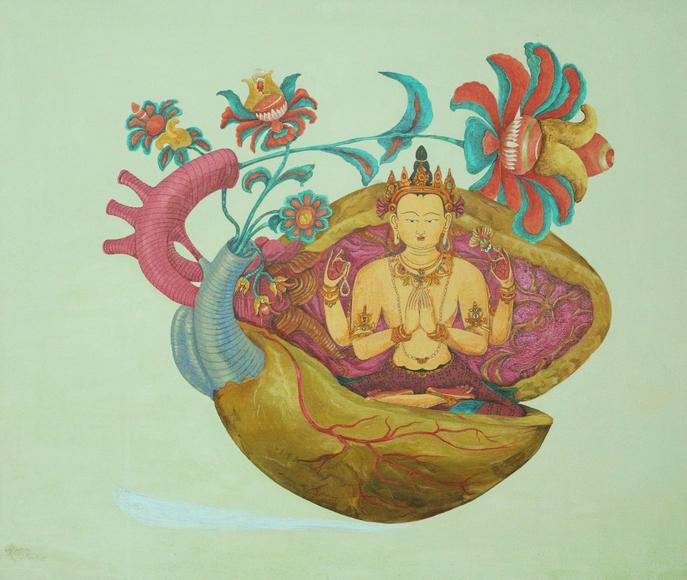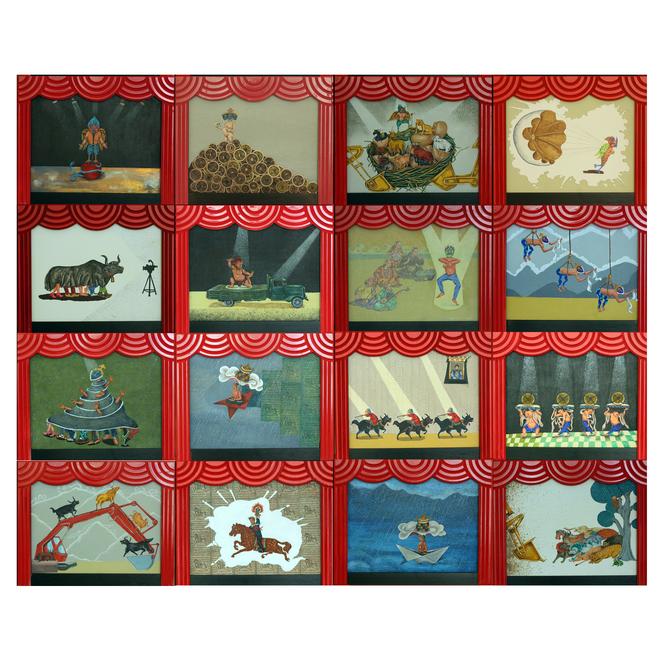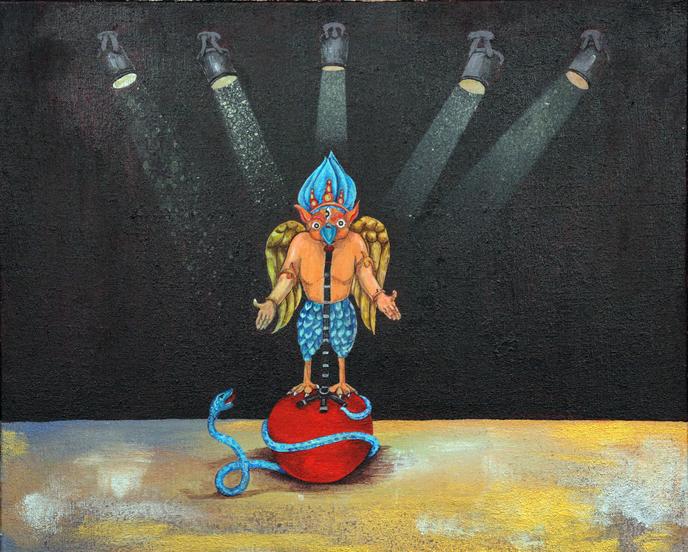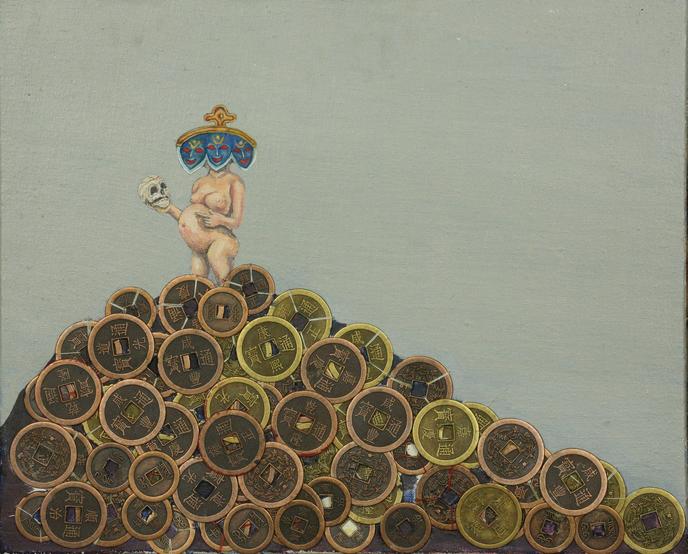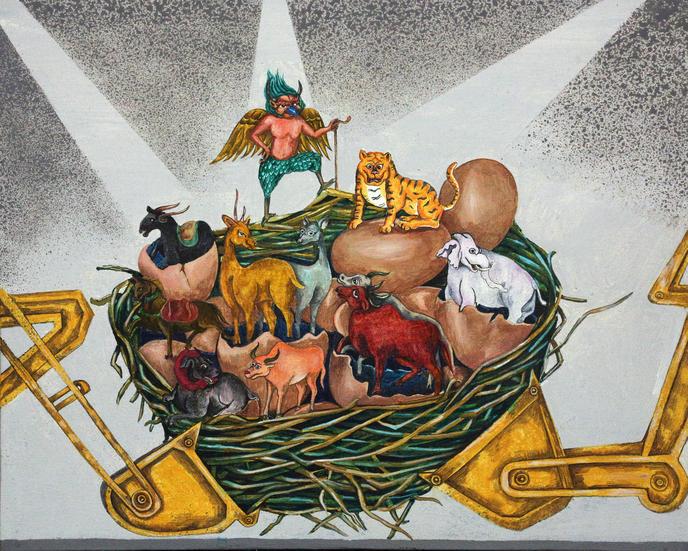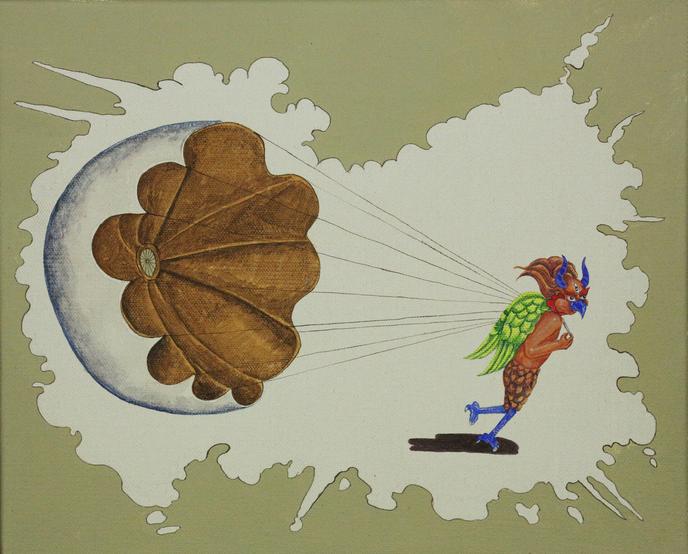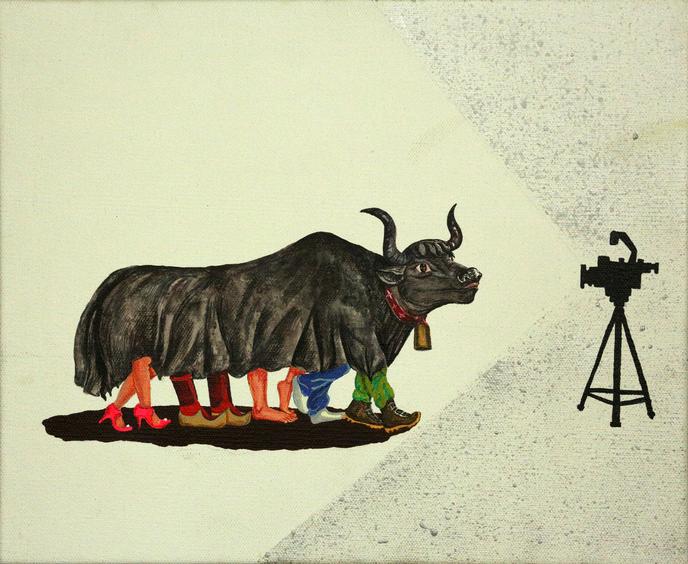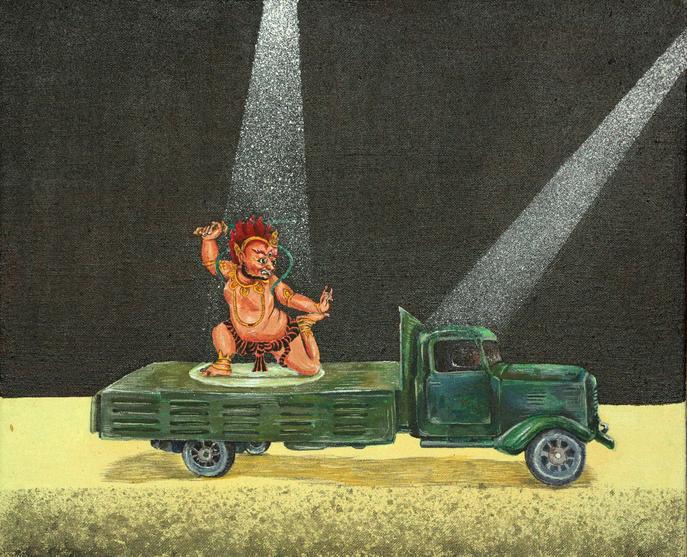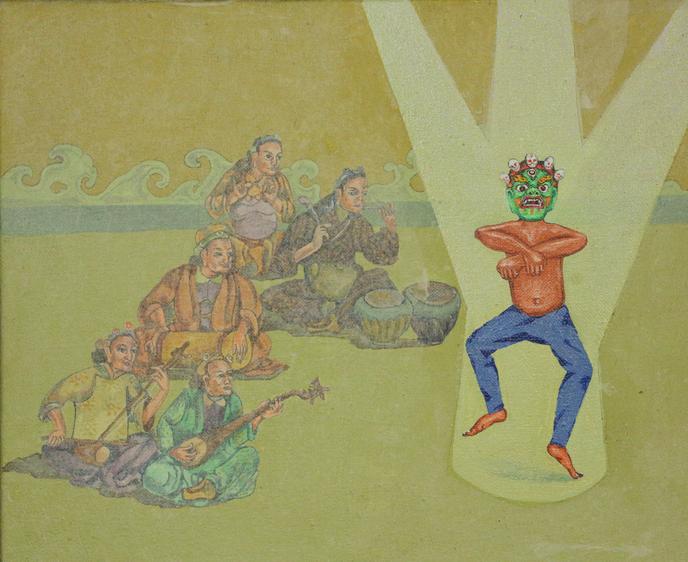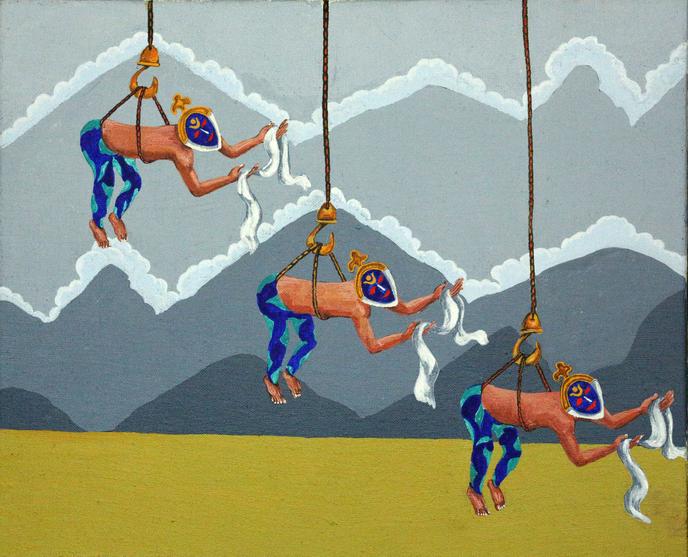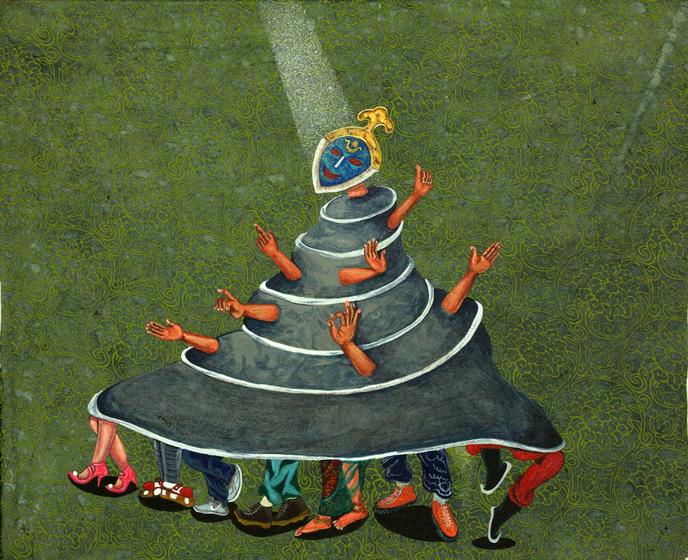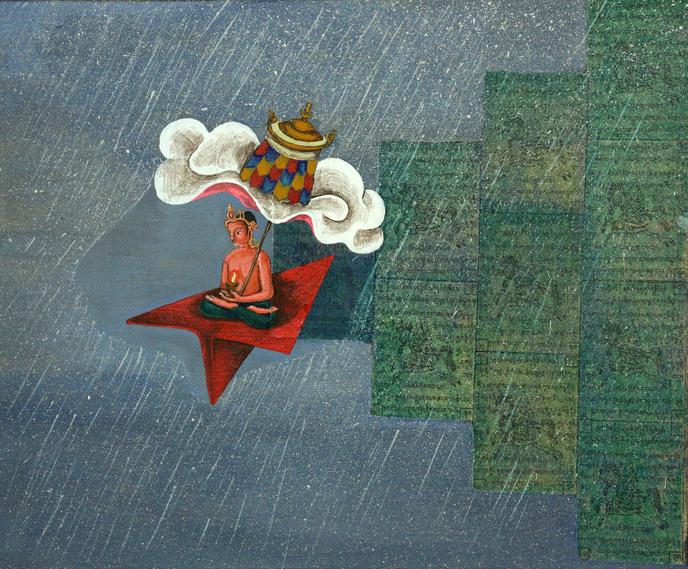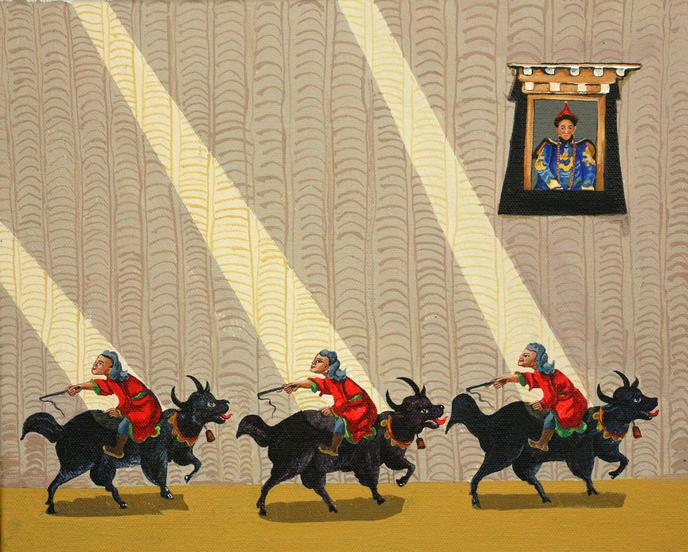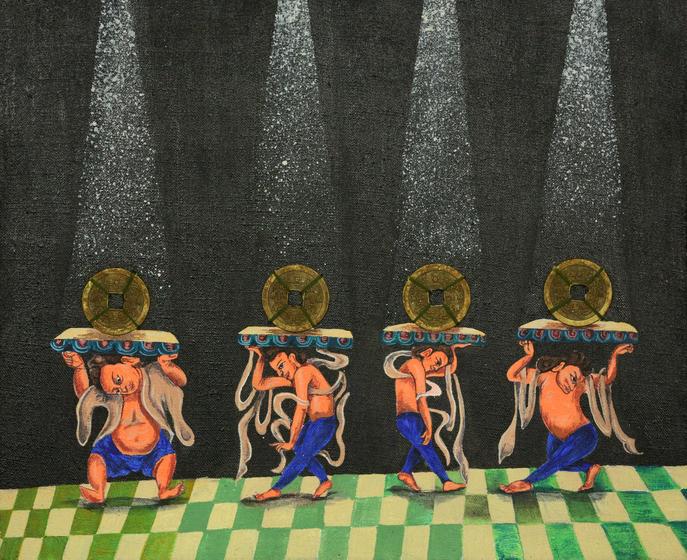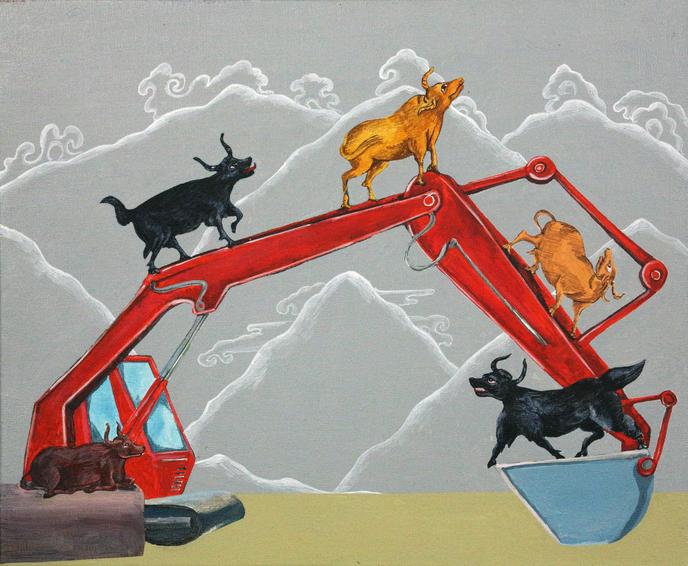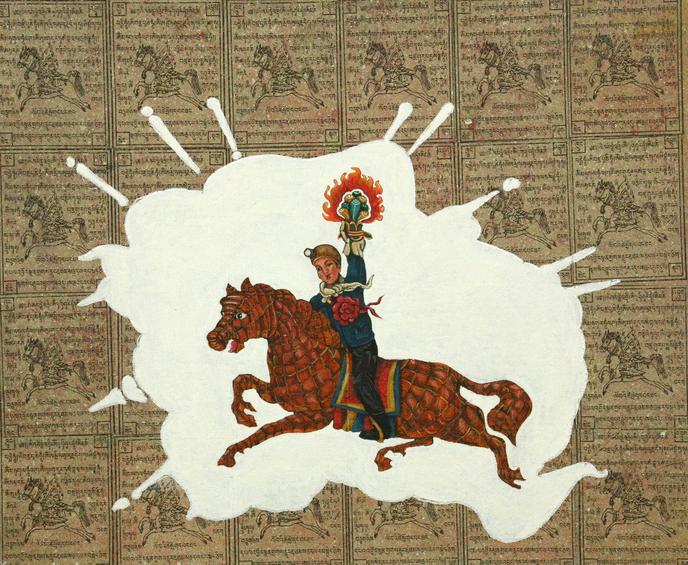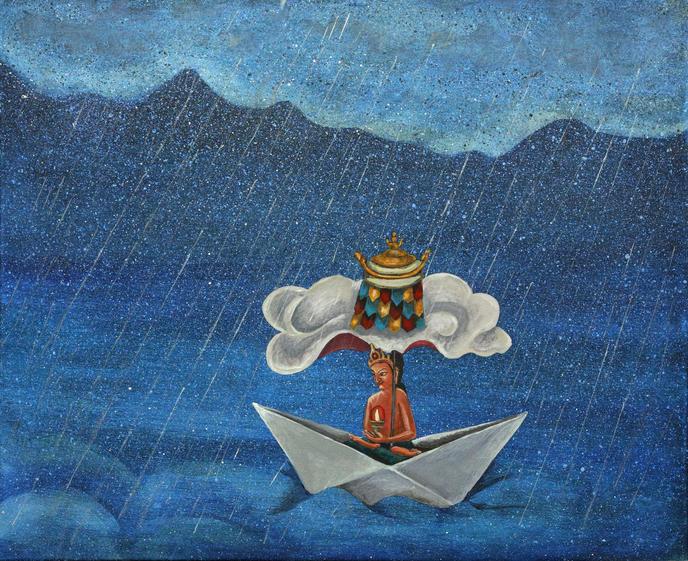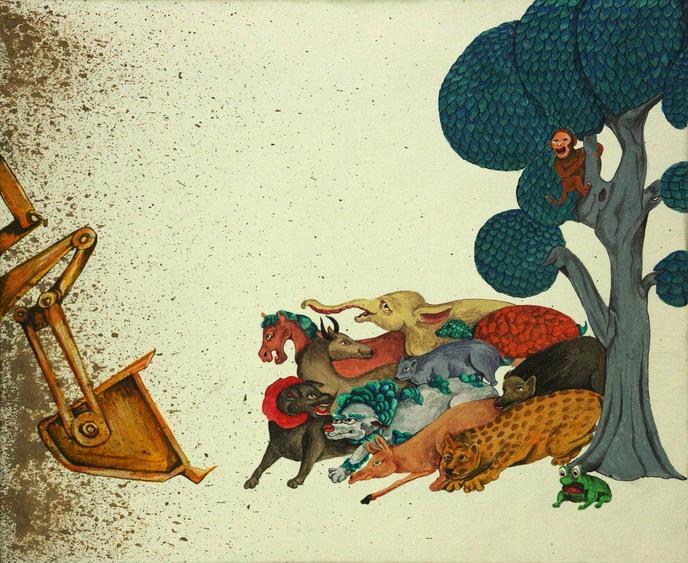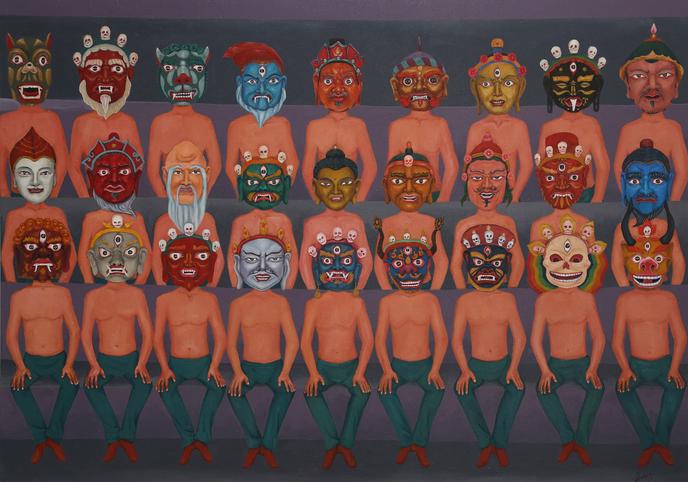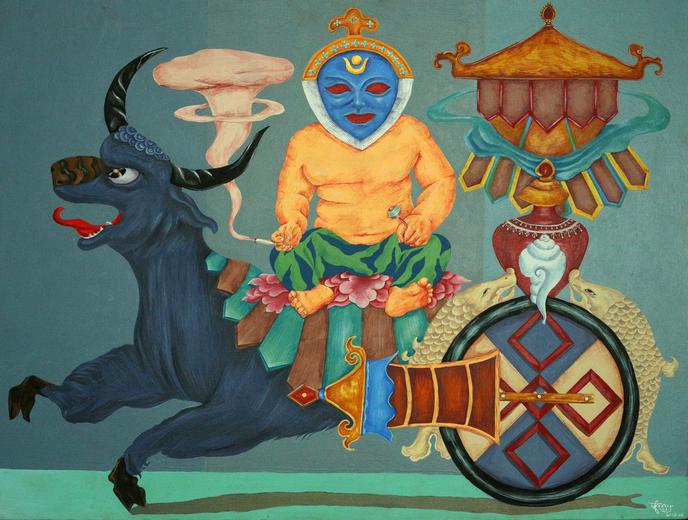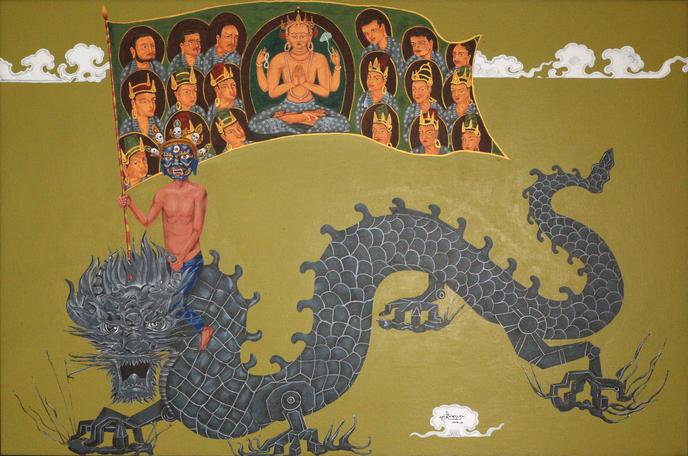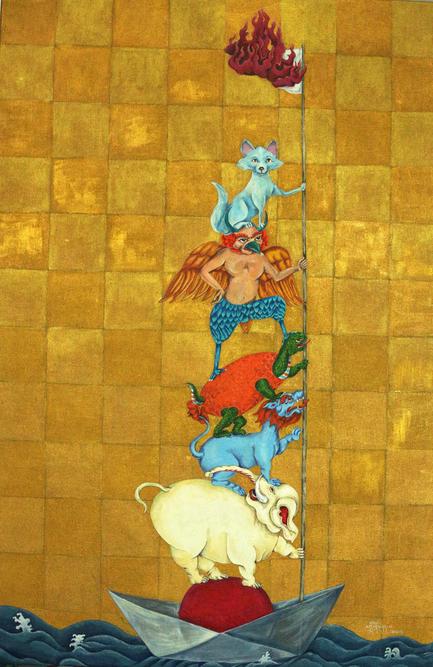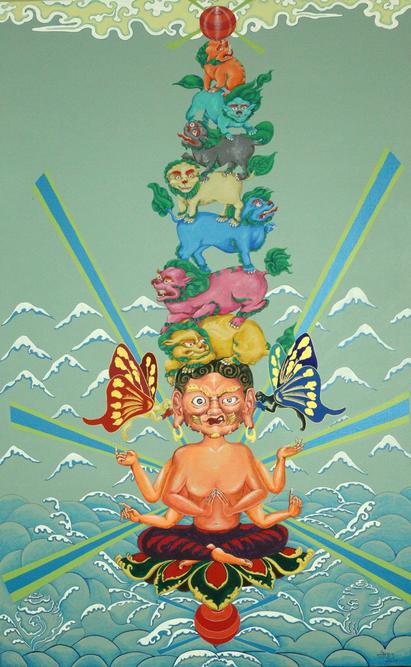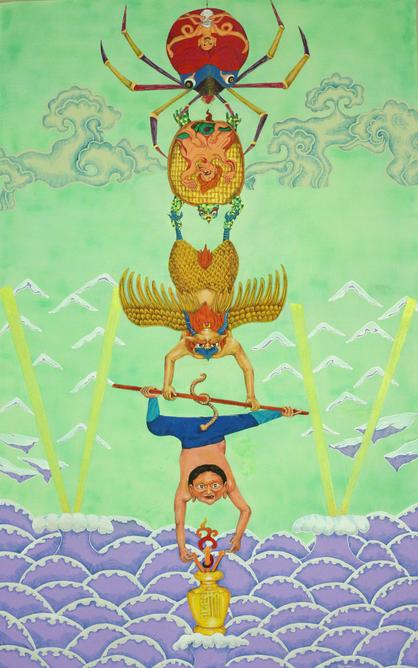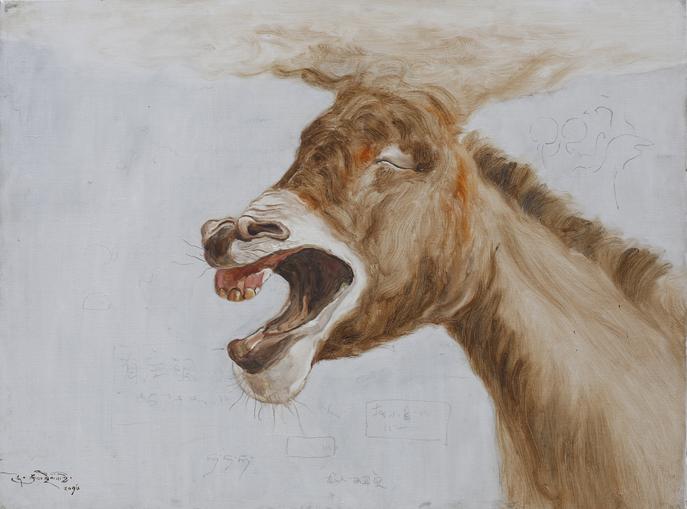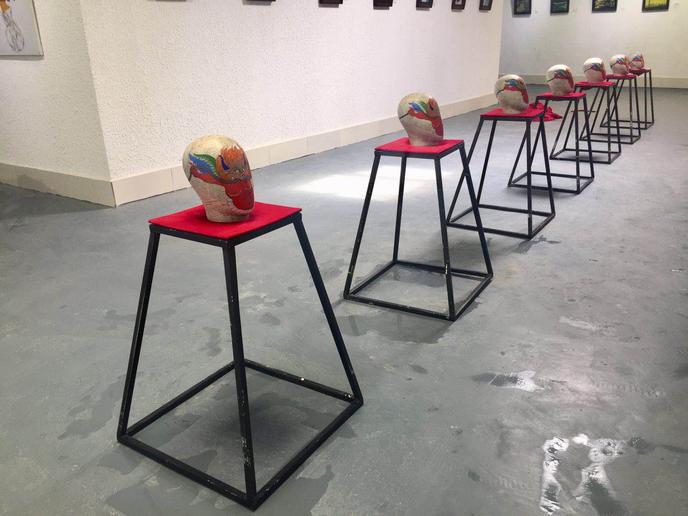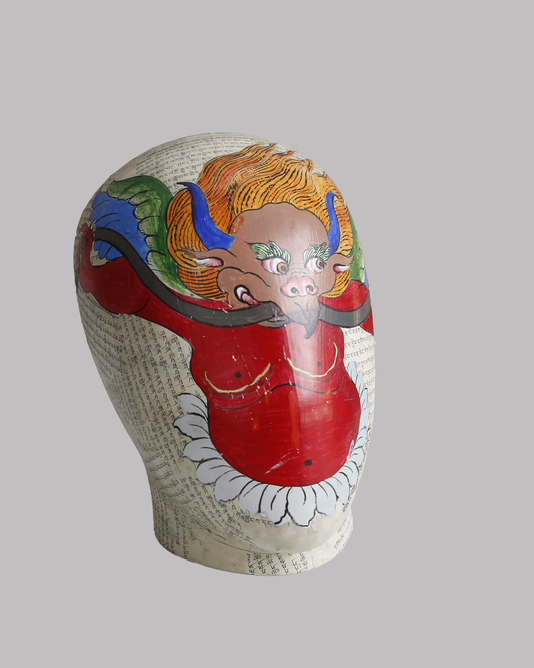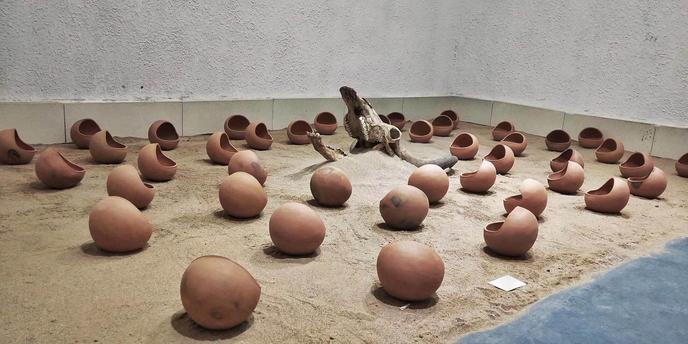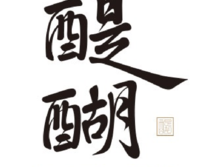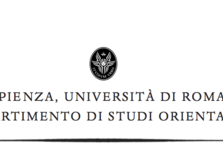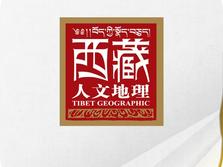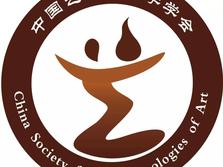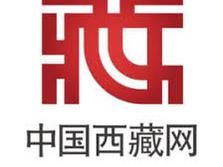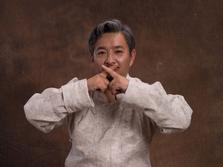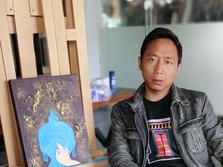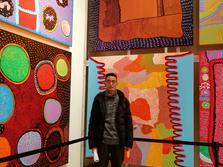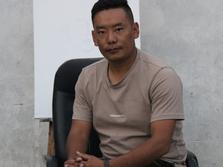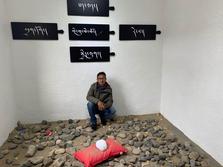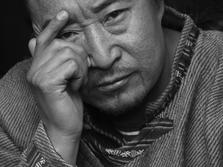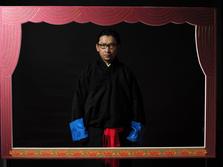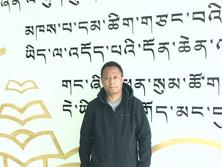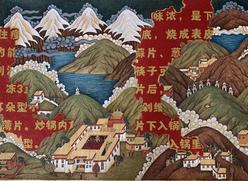
Gade 嘎德(b. 1971), Landscape 风景, 2016, acrylic on canvas, cloisonne, 17 3/4 x 39 3/8 inches (45 x 100 cm)
Contemporary Tibetan art has gradually entered the international horizon since 2000, and every exhibition, whether large or small, is constantly refreshing and reshaping the outside world’s stereotype views on Tibetan art. When coming to understanding Tibetan art, people generally think it refers to Thangkas and traditional Buddhist arts. By the Tibetan artists’ rising, the public are slowly improving their perceptions on Tibetan art, their hypothetical modifications on Tibetan land, culture and people, and narrative perspectives by the others.
The development of modern and contemporary Tibetan art can be divided into four stages. The first stage, from the beginning of 1950s, was the celebration of the slaves(serfs) feudalism’s liberation and the socialist constructions. The artistic conception mainly focused on revolutionary historical subjects, which people was the master. The second stage, from 1980s, was after the Cultural Revolution and opening of China. The production of the arts focused on the Tibetan local customs, the polar wasteland, the purity and the devotion from Tibetan people. The third stage, from 1990s to 2000s, began with the description of the oriental mysticism on Tibet as the land of Shangri-La (Shambala). In the fourth stage, since 2000s, with the acceleration of globalization and the popularization of internet, local Tibetan artists have gained more opportunities to exhibit, exchange and learn at home and abroad. This opening greatly expanded the artists’ horizons. Simultaneously, the artists paid more attention on the innovation and transformation of their own ethnic arts. They hope to express Tibet by their own perspectives instead of being expressed by the others. The artistic expression forms are diversified. The artists got rid of traditional medium expressions, such as Chinese ink, oil painting, prints and engraving, to begin making installations, performance art, earth art, conceptual photography, new media art and the other various art forms.
Gendu Choephel Contemporary Art Collective was founded in 2013, its significance lies not only in new art forms, which has been introduced before, but also in the cultural awakening of local artists. Gendu Choephel Contemporary Art Collective focus on the relationship between the overall cultural situation and individual lives. They start to express contemporary Tibetan art in the global vision of the cultural interconnectedness. During this period, contemporary Tibetan art no longer played the role of painting an exotic culture but embarked on a widely participation in mainstream international and domestic exhibitions such as La Biennale di Venezia, Biennale of Sydney, Dojima River Biennale (Japan), Art Basel and more. International and domestic studies of contemporary Tibetan art, in monographs, articles and papers have reached more than dozens. It means that the contemporary Tibetan art dominated by the mainland artists’ expression is transforming into the expressions by native Tibetan artists. This opens up a new era – a new age led by Tibetan ethic modern and contemporary artists.
New generation Tibetan artists wish to introduce the traditional Tibetan visual languages within the context of contemporary art. They continuously activating the long-disrupted traditional Tibetan artistic mother tongue system. They realize that the sources of any ethnic art developments come from its own rooted cultural heritage. Therefore, contemporary Tibetan art shall not be considered as copies of western contemporary art. In fact, it has its own language and value systems. This is not to advocate the ethnicization of art.
Nineteen Century European intellectuals and artists established the modernism, that was, each person as a member of his/her own nation and ethnicity. Use the British artist, as an example, his cultural idealism does not limit to his own cultural identity, but rather as a British national to create a new culture for mankind. What matters is not that the English’s contribution in culture and arts with British characteristics, but their creation of human culture. Only the universal human culture is created by the British, and its glory belongs to the British nation.
Similarly, today we shall create an interconnected culture, rather than each nation doing its own characteristic culture, and we shall avoid narrow nationalism. On a macro level, the nation has its own cultural identity, but the culture is not fixed and born with it. The culture is constantly changing and evolving to solve problems in reality. Thus, the emphasis on the distinct native language expression is not to emphasize the national character, but to express a culture in diversity under the universal framework of the world culture as an entirety.
I understand contemporary art is the “true presentation,” to express one’s own experience and cultural situation. Take Tibet as an example. What is Tibet? Everyone has different views and various experiences. However, the various answers constitute a real Tibet. Tibet is not just limited to the "blue sky and white clouds", or "snow-capped mountain and grassland". Besides, after our generation has undergone the disruption and discontinuation of language, writing, history and culture, our expression is unilateral and fragmented. In this sense, no one can express Tibet. One only can express one’s personal narratives and views. Fortunately, artists are capable of using arts to enlighten and awake people so that they can make free choices. Contemporary art offers a vehicle for Tibetan young artists to approach reality as closely as possible, to experience the daily life, to show life, and to enlighten the mind and follow the heart within.
We are introducing eleven artists in this exhibition. Most artists were born in the 1980s and 1990s, with a few were born in the 1970s. They are the youngest generation and the most active Tibetan contemporary artists in Tibet. As a whole, their works always focus on the relationship between the social changes in contemporary Tibet and their own personal situations, as well as their anxieties about their own cultures and environments. They constantly reconciling the tensions between the tradition and the modernity, and the conflicts between the religious belief and the social reality. Especially in the context of the great era of the social and economic transformation, changes in secularism and globalization sweeping, every artist lives in Tibet is going through an unprecedented soul changes and belief conversions.
Tibetan artists are not confined to use easel paintings, but they also involve in installations, conceptual photograph and video arts. Tibetan artists’ creative environments and conditions are still extremely difficult. They have to raise funds and establish their own art groups to support each other and keep warm. Most of the participating artists are from Bocun Contemporary Art Group. They continuously holding self-funded exhibitions every year at their own art space. The group is the only and still active private contemporary art group in today’s Tibet, under the situation which is lacking market and lacking any government or other supports.
I often compare the artists, who engage in the contemporary art in Tibet, to Don Quixote, who fought the windmills with a spear. They dream that the art can make differences. But the real situation usually pulls them back to the reality. Although the direction of efforts is deviated from reality, they don’t want to compromise.
The name of the exhibition, “Illusion and Bubble”, originates from the scripture of Diamond Sutra: “All phenomena are like a dream, an illusion, a bubble and a shadow; they like a dew and a lightning. Thus, should you meditate upon them”. Using the phrase of dreams and bubbles to reflect the state of the contemporary Tibetan art is the most appropriate description. There has never been an era as dreamy as today, our lives are progressively depending on the virtual internet, where we gain awareness, produce and record history. Perhaps two thousand years later, when historians study our generations, the internet is the giant transparent medium. The trivial or remarkable records of the virtual world will be like the bubbles suspend over this era. When something is erased from the virtual world, maybe it is its historical demise. Perhaps the world we live in, the dream we persist and the art we create are just a dream bubble from the beginning to the end.
Gade 嘎德
April 9, 2020

